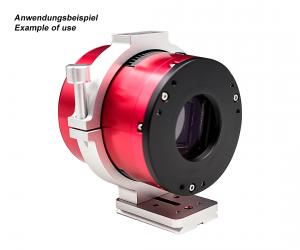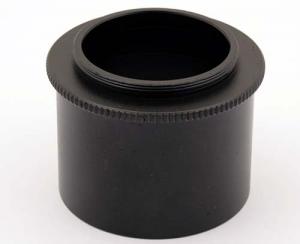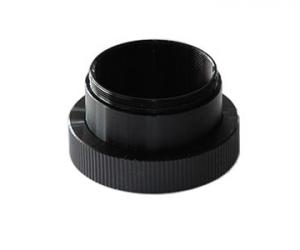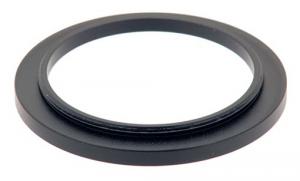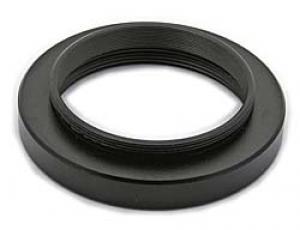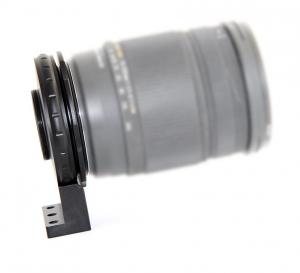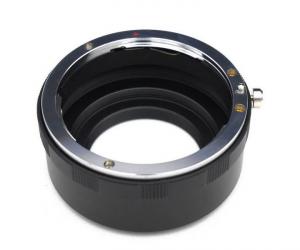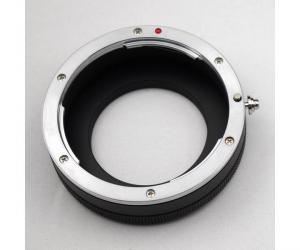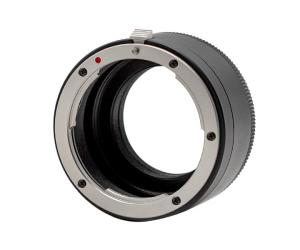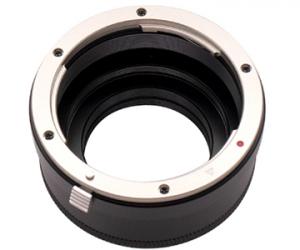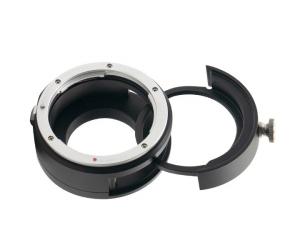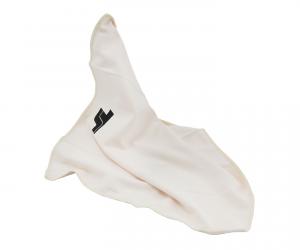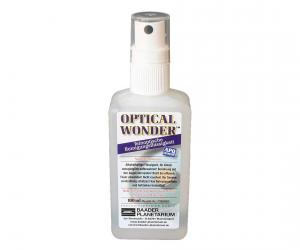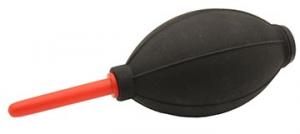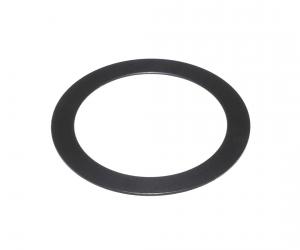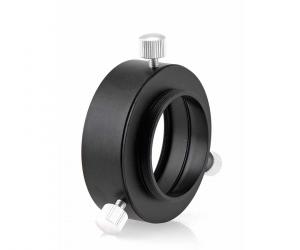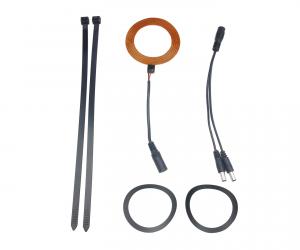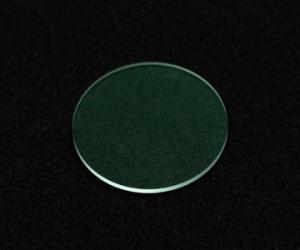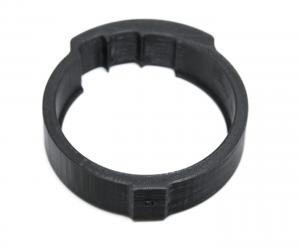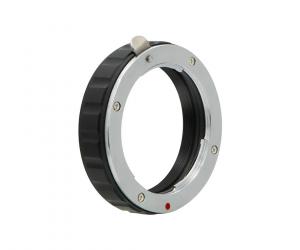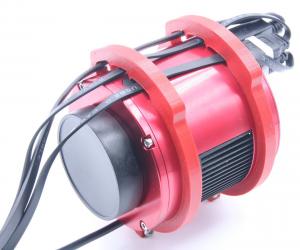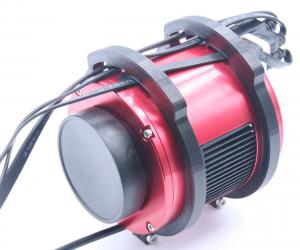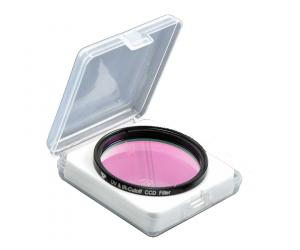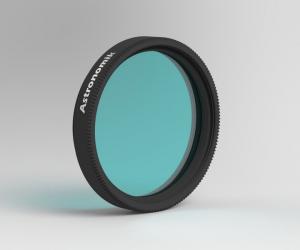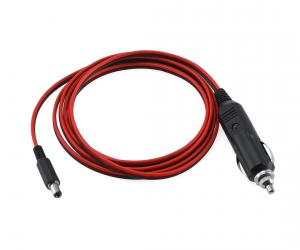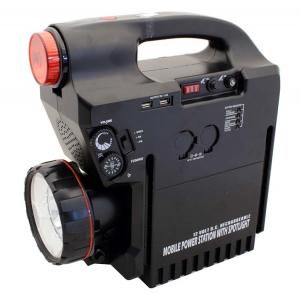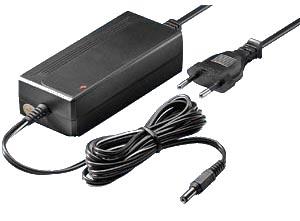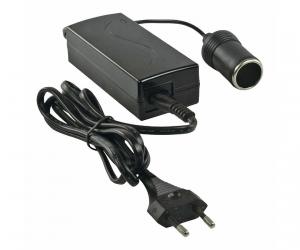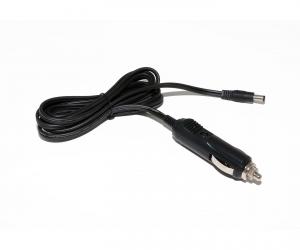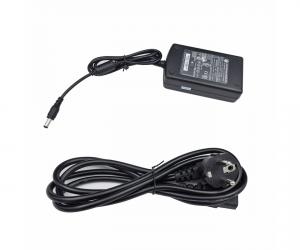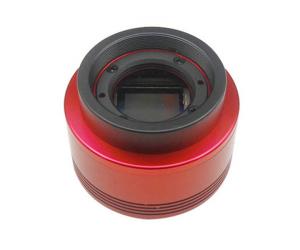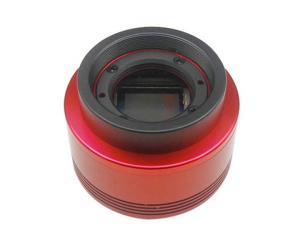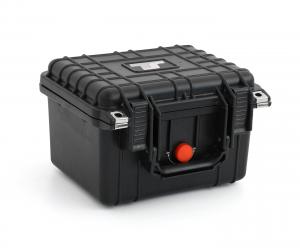- Telescopes
- Overview:
Telescopes - Achromatic Refractor
- Apochromatic Refractor
- Overview:
Apochromatic Refractor - ED Refractor - less color aberration than an achromatic
- SD APO - color free 2-element APO objective
- EDT APO - 3 element ED objective
- High End APO with 3-element APO objective - no color aberation
- Flatfield APO with flat field for Astrophotography
- All Apos and EDs from all manufacturers - large overview
- TS APO and ED from Japan with high quality optics
- Overview:
- Newtonian Telescopes
- Dobsonian Telescopes
- RC Ritchey Chretien Telescopes
- Casssegrain Telescopes
- Reflektor Telescopce with Lens Correcture
- Maksutov Cassegrain Telescopes
- GoTo Telescopes
- Solar Telescopes H-Alpha
- Overview:
- Mounts Tripods Rings Rails Power Supply ...
- Overview:
Mounts Tripods Rings Rails Power Supply ... - Mounts Equatorial with GoTo
- Mounts Equatorial without GoTo
- Mounts Azimutal with GoTo
- Mounts Azimutal without GoTo
- Mounts GoTo - Harmonic Drive
- Travel mounts for astro imaging
- Tripods Piers Polar Wedges
- Mount Control & Electronics
- Dovetail Clamps, Plates and Mount Adapters
- Tube Rings
- Power Supply
- Counterweights Balance Weights
- Mount Accessories - Other
- Overview:
- Telescope Accessories
- Overview:
Telescope Accessories - Eyepieces
- Barlows & Reducer Lenses
- Diagonal Mirrors and Prisms
- Binocular Viewers
- Finder Scopes
- Telescope Collimation and Test
- Cleaning Tools
- Transport and Storage
- Dust protection for Telescopes & Accessories
- Stray Light Protection
- Dewcaps and Heater
- Focusers, Adapters, Motorfocus
- Telescope DIY & Improvement
- Other telescope accessories
- Replacement Parts
- Overview:
- Filters
- Overview:
Filters - Color Filters and Color Filtersets
- Nebular Filters for Visual Observing
- Neutral-Density and Polfilter
- Photo Narrowband Nebular Filters
- Photo Broadband Filters
- Photo Planetary Filters
- Photo R-G-B and IR Cut Filters
- Photo - Filtersets
- Photometric Filters
- Clip Filter for DSLR Cameras
- Filter Wheels and Filterslider
- Solar Filters for white light
- Solarfilter for H-Alpha and Calcium
- Overview:
- Adaptors
- Overview:
Adaptors - Adapter 1,25" and 24,5mm
- Adapter 2"
- Adapter T2 - M42x0.75
- Adapter M48x0,75
- Adapter M54
- Adapter SC
- Adapter M63
- Adapter M68
- Adapter to other Threads
- Adapter Extensions
- Adapter camera bayonet
- Adapter Objective Filterthread
- Adapter Quick Changing , Rotation
- Adapter Eyepiece Projection
- Adapters Tilting
- Overview:
- Astrophotography and Photography
- Overview:
Astrophotography and Photography - Cooled Cameras
- Cameras without Cooling
- Deep-Sky Cameras uncooled
- Set-Offers Camera, Filter, Wheels
- Acessories for Cameras
- Travel mounts for astro imaging
- Imaging Correctors for Telescopes
- Autoguiding Cameras & Sets
- Everything for Guiding
- Focusing aids - Bahtinov mascs
- Flat Field foils and boxes
- Lenses for Cameras
- Piggyback Camera Holder
- Camera Bags, Photocases & more
- Digital Camera and Smartphone Adapter
- Other photo accessories
- Overview:
- Binoculars, Spotting Scopes, Microscopes, Range Finders
- Overview:
Binoculars, Spotting Scopes, Microscopes, Range Finders - Roof Prism Binoculars
- Binoculars with Porro prisms
- Binoculars from 100mm Aperture
- Binoculars with 1,25 inch eyepieces
- TSMX APO Binoculars
- Binoculars for Astronomy
- Binoculars Hiking Bird watching
- Monoculars - Opera Binoculars
- Accessories for Binoculars
- Spotting Scopes
- Range Finders
- Microscopy
- Bags for Phototripods & Binoculars
- Overview:
- Phototripods and Binomounts
- Books, Software
- Overview:
Books, Software - Books for Astronomy Beginners
- Star Charts and Planispheres
- Books about our Solar System
- Observing Tips for Amateurs
- Popular Astronomy Literature
- Teaching material
- Astrophotography books
- Telescopes, Observatories, Construction
- Calendars Yearbooks
- Software, Star Charts
- Books for Microscopers
- Books Nature and Animals
- Nature Photography TimeLapse
- Overview:
- Night Vision, Magnifiers, Weather, Domes & more
- Beginner Astronomy and Gift Ideas
- Second Hand & Special Offers
- New products
Manufacturer: ASI - ZWO
Product number: ASI294MMpro
EUR1890.00new
EUR 1.890,00
incl. 19 % VAT (DE)
The VAT indicated refers to that applicable in Germany. After logging in, the VAT amount is adjusted to the applicable VAT of the stored delivery country. Therefore, the final price may vary accordingly.
excl. 6.95 € shipping costs (DE)
more details to the shipping costs ...Please log in to calculate shipping costs to your country.
rating: 5.0 of 5ZWO MONO Astro Camera ASI294MM Pro cooled - Sony Sensor D=23.2 mm2
- Details..
- Technical data..
- In the box..
- Reviews..
- FAQ..
ZWO ASI294MM Pro - cooled mono CMOS Camera for many fields of astrophotography
ASI cameras stand for very good workmanship and have modern CMOS sensors installed. This versatile camera uses the state-of-the-art "back-illuminated" Sony IMX492 sensor.Sony specifies a sensor diagonal of 21.63 mm. However, due to sensor refinement by ZWO the true diagonal is 23.2 mm.
The 4.63 µm pixels of the ZWO ASI294MM Pro make this camera an all-rounder with highest sensitivity for short exposure times in deep sky photography. Additionally, binning can be switched off, then the pixel size is only 2.32 µm, which increases the detail resolution - even planets can be photographed well this way.
In addition, binning can be switched off, then the pixel size is only 2.32 µm, which increases the detail resolution.
Advantages and features of the ASI MC294MMPro mono camera:
Application ranges of the camera:
Important: external power supply required!
Please notice that all ZWO cameras with cooler need to be connected to an external 11-15 V power supply to work.Even when the cooler is not being used the power supply must be used for the camera to be reliably recognized.
Optimal support by Teleskop-Service before and after purchase:
We work with the cameras ourselves and can offer you optimal advice. Which camera matches your telescope, how do you achieve optimal adaption ...Teleskop-Service is one of the biggest ZWO dealers. Due to our contacts, we offer best possible service also after purchase.
Practical tip 1 from TS: Integration of 2" filters, 360° rotation and quick coupling
The camera is often used on correctors that do not have a filter thread. In addition, the filters should always be used as close as possible to the camera. Here we offer you a solution that can do much more.The adaptation is very simple, the 21 mm T2 extension is replaced by:
One tuning ring comes to the camera side, one tuning ring comes to the telescope side of the rotator. Then screw on the M42-M48 adapter with 16.5 mm length and you are in the right distance with the camera.
Practical tip 2 from TS: Storage of cameras and accessories
Especially in our latitudes, the nights are often very humid. This humidity condenses on your camera, eyepiece or filter when they come into the warm interior of the apartment. Especially cooled cameras are affected by this. Quickly a photo session is over because the sensor ices up.Good storage is an important prevention against dew and also extends the life span.
After use, put the camera immediately into the TS Protect Case and add some silica gel. During storage, the silica gel will suck the moisture out of the camera. At the same time, the penetration of humid room air is prevented. Dry storage even allows the small dry tablets in cooled cameras to partially regenerate. Your camera or accessories are always ready for you in optimal condition. You can find the silica gel and the case in our product recommendations.
Downloads, drivers:
ZWO provides software and drivers online for free download.Software and drivers for all ZWO cameras
Frequently asked questions about ZWO cameras:
The FAQ area is constantly updated by ZWO, here you will find answers to many questions.FAQ about ZWO cameras
ZWO Users Forum
Manuals for ZWO products:
The manuals page is constantly updated by ZWO, here you can find user guides for ZWO products.Link to the manuals
How to clean my ZWO camera:
The manufacturer provides a manual that covers how to clean an ASI camera and regenerate the desiccant tablets: Please click here.Astrophotographic results obtained with this camera on Astrobin
Here you can find some astrophotographs made with this camera model: Link to Astrobin| Sensor: | 4/3" CMOS Sony mono IMC492LLJ - back illuminated |
| Resolution: | 11.7 megapixels, 4144*2822 (2x2 Binning) |
| Resolution: | 46.8 megapixels, 8288*5644 (1x1 Binning) |
| Pixel size: | 4.63 µm (2x2 Binning), 2.32 µm (1x1 Binning) |
| Sensor size: | 19.1 mm x 13.0 mm - 23.2 mm diagonal |
| Exposure time: | 32 µs to 2000 s |
| Maximum fram rate at full resolution: | 16.3 fps |
| QE: | up to 90% |
| Full Well: | approx. 66 ke- |
| Readout noise: | 1.2 to 7.3 e- |
| ADC: | 14 bit |
| Sensor protection: | Protective AR glass |
| Cooling: | Peltier cooling up to 35 °C below ambient |
| Software demands: | USB 3.0 should be supported by operating system |
| Cache: | 256 MB DDR3 cache |
| Telescope connection: | T2, 2" and 1.25" |
| Distance T2-thread (female) to sensor: | 17.5 mm (6.5 mm without adapter) |
| Dimensions: | 78 mm diameter and 73.5 mm length (without 4 mm male T2 thread) |
| Weight: | 410 grams |
Astrophotographic results obtained with this camera on Astrobin
Here you can find some astrophotographs made with this camera model: Link to AstrobinHere is a beautiful image from our ambassador Peter Dunsby (Cape Town, South Africa):
 Object: NGC 4945
Object: NGC 4945Photo Credits: Peter Dunsby
https://www.astrocapetown.com
https://www.instagram.com/astrocapetown/
https://www.facebook.com/astrocapetown
Congratulations on this great photograph!
Cooled ASI cameras - quick guide
Quick Guide for the quick first use of your cooled ASI camera.Link to the manual in English - PDF file
Sensor cleaning and desiccant cartridge replacement
Here you will find tips on how to identify where the dirt is and how to clean the sensor or change the drying cartridges.Link to the manual in English - PDF file
Deep-sky photography with cooled ASI cameras with high resolution - without guiding - "lucky imaging" principle
The cooled cameras from ZWO offer new and extremely exciting opportunities in the field of deep-sky photography. Finally highly resolving, smooth deep-sky images without great effort!
With conventional CCDs, there is still a race taking place to the longest single exposure times (some of us know that from imaging with film). But long exposure times for each single frame place various demands and come with a few problems:
With the new CMOS sensors which are have been installed in the cooled ASI cameras from ZWO, you can tread indeed entirely new paths. It does not count anymore how long you expose, but how often!
Two of the biggest advantages of these new cameras are the extremely low readout noise, despite the high frame rates, and the enormous sensitivity of the sensors. In combination, these advantages are the key to impressive high-resolution images. The signal-to-noise ratio is excellent. The more frames are recorded, the more noiseless and deeper the summary image will become. Basically it is the same as with planetary imaging. Hundreds or even thousands frames are stacked.
The limit is set mainly by the capacity of the hard disk. The following should be kept in mind: while a conventional 16 megapixel CCD camera need up to 15 seconds for transfering a single frame to the PC, a CMOS camera like the ASI1600 can transfer up to 23 frames per second (of course depending on the exposure time). At an exposure time of 5 seconds, the CCD would achieve just under 3 images per minute, an ASI1600 approximately 12 images! So we can take 300% more exposures in the same time.
There are several free programs for imaging and editing (stacking) which can help us here, for example Firecapture. Many know this software already from planetary photography, but Firecapture can also be used for deep-sky images. It can control the cooling of the camera, create a dark and also a flat and subtract automatically, save in FITS format, and even do autoguiding. But we only need the latter for this type of deep-sky photography if the mount is not polar aligned properly or other extreme tracking errors are foreseeable.
Apart from that, we now just have to: set the exposure time to a value between 1 and 15 seconds. Set gain not too high but also not overcautiously low (approximately between 100 and 350), and take at least 200 single images.
A concrete example (Fig. 1):
We use a ZWO ASI1600MMC, a 300/1500 Newtonian telescope plus coma corrector on an EQ6. A fast(er) aperture ratio promotes short exposure times, of course.
Firecapture is started and the image is focused on a bright star with still short exposure times (<1 s). Normally, a usable star can be found in the preset image field.
A check mark is set at 16Bit (top left) and the file type FITS is chosen. Exposure time is set to 5 seconds, gain set to 321 (without particular reason). Thereby the image noise still stays within acceptable limits. Cooling can be set at pleasure or matching the power supply. Gamma stays at 50. USB traffic is not relevant in this case.
Now set the mark at Dark Frame. Firecapture then takes the selescted number od dark frames (don´t forget to cover the telescope aperture) and subtracts their mean value from the single images. The few hot pixels disappear. Amplifier glow is no longer an issue.
Set as exposure number limit are, for example 1000 frames. However, it should be kept in mind that, in the case of the ASI1600, a single image has a size of 16 MB. A few hundred single images quickly result in a few gigabytes of data. It should always be ensured that a storage location is selected which is able to handle this amount of data.
 Abb. 1
Abb. 1When the sleep-stealing part is over and the hard disk filled with raw images, it is recommended (for example with the program Fitswork) to classify them and to sort out possible "duds" with satellites, airplanes, wobbles, etc. One could also stack the frames with Fitswork, but with Autostakkert!, stars and details become finer. However, stacking with Fitswork makes sense if manual intervention is necessary, for example if much displacement between the single frames.
Attention - if you want to load the single images in Autostakkert!, the file type "Image files" has to be chosen. Then a bright star is selected as anchor point and clicked on "Surface" under "Image stabilisation" (just under the "open" button). "Planet (COG)" can also work with bright objects which have an obvious centre of brightness, but mostly, "Surface" is more succesfull. At this point, you click the button "Analyse". (Fig. 2)
 Fig. 2
Fig. 2When this has been completed, a bright star is selected as "alignment point" again. You can set several ones, but it is not necessary (except with image rotation or similar problems).
Time to click on the "Stack" button. Now the single images are stacked.
The final result is saved by Autostakkert! in the chosen image file format (in any case, choose a 16-bit format like TIF or FITS).
The difference between a single frame and the summarized image becomes astonishing. (Fig. 3)
 Fig. 3 histogram enhanced
Fig. 3 histogram enhancedAt the beginning of the processing, the summary image will seem quite unremarkable and dark, but with the help of a histogramm adjustment, the object of desire emerges quickly. (Fig.4)
 Fig. 4
Fig. 4Important! For further processing, a program should be used which can handle 16 bit and the corresponding formats! Once again, Fitswork is well suited for that. However, many amateur astronomers will use Photoshop for the final touches.
We suspect that one could intensely debate how long the maximal single exposure time should be. However this rule applies: the shorter, the crispier. Short exposures are less disturbed by seeing. Guiding errors carry no weight. Therefore, the attainable accuracy is accuracy is significantly better than with exposures of several minutes.
On the other hand, the (areal) brightness of the object must be taken into account, after all we need a bit of signal on the sensor.
Of course, you can also expose several minutes with the cooled cameras from ZWO. There is nothing to stop you from taking short focal length photographs, for example of nebula regions. One can definitely use the ASIs like a ctandard CCD camera. But this slightly different approach with short exposure times offers many amateurs astronomers the possibility for imaging nebulae and galaxies with additional details. Given the increasing light pollution in many places, this might possibly the long-awaited life belt for this wonderful hobby.
This photo technique is only just beginning and still offers many opportunities. We will continue, get involved!
Your Teleskop-Service Team
Question:
Will my Pro camera work without extra power supply if I don´t turn on the cooling?
Answer from Teleskop-Service:
No, the current Pro cameras always require extra power supply, even without cooling.
Recommended accessories
Accessories for mounts
Adaptors
TS-Optics Focal Adapter from 2 Inch to T2 (M42x0,75)
EUR 29,90RRP EUR 34,90you save 14.3% (EUR 5,00)
TS-Optics Optics Adapter for Canon EOS Lenses to T2 for astro cameras - with 1/4" photo...
EUR 99,00RRP EUR 119,00you save 16.8% (EUR 20,00)
Cleaning & Collimating
TS-Optics Optical Super Microfiber Cleaning Cloth
EUR 5,99RRP EUR 7,95you save 24.7% (EUR 1,96)
Customers who bought this product also bought...
General Accessories
Photo Acessories
Power Supply
Similar Products
ZWO ASI294MM USB3.0 Mono CMOS Camera - Sensor D=23 mm, 4.63 µm Pixel Size
EUR 1.199,00RRP EUR 1.590,00you save 24.6% (EUR 391,00)
Transport & Covers
TS-Optics Protect Case waterproof hard case - width 271 mm
EUR 34,98RRP EUR 44,95you save 22.2% (EUR 9,97)
Reviews
Written by Gerhard Geipel
on 2023-06-27
"Tolle Kamera, 45 Megapixel eigentlich zuviel, aber mit binning kommt man gut zu eindrucksvollen Deep Sky Bildern. und mit 2x2 Binning sind es immerhin noch etwa 11 Megapixel."
Written by Andreas Sperber
on 2022-03-09
"Die Kamera ist einfach der Hammer! Dank der extrem hohen Auflösung und der bei Binning gesteigerten Dynamik ist sie der Grundstein für eine solide Sternwarte. Sie ist nun meine Hauptkamera und die ersten Bilder sind unvergleichlich gut geworden. Das Rauschen ist am unteren Minimum was man bei einer CMOS erwarten kann und das Verstärkerglühen ist im Vergleich zu früheren Modellen nahezu nicht mehr vorhanden. Ab 5 Minuten bei 2x2 oder mehr Binning ist es andeutungsweise zu sehen, aber kein Problem für ein normales Darkframe. Meine Empfehlung für jeden Astrofotografen!"
Written by Alvise Dorigo
on 2022-02-18
"Well... ZWO cameras do not need presentation. They are generally very good camera mouting the Sony image sensors. Unless you get a faulty part (which can happen) excellent results are guaranteed. I used it in Bin1, at maximum resolution, more than 40Mpx... which gives a high crop factor with an extra virtual zoom on your target (I like details of deep sky objects and small field of view). "
Written by Gerhard Worel
on 2021-07-07
"Gerät läuft perfekt, wie beschrieben und danach erwartet"
Written by Luc Jaspers
on 2020-11-03
"Very sensitive, with amp glow, zwo known and proven quality"
Written by Benny Colyn
on 2020-11-02
"Large pixels means it matches well with longer focal lengths. Good size sensor means it does well in wider shots. All around great camera, and a nice upgrade from the venerable ASI1600MM."






















